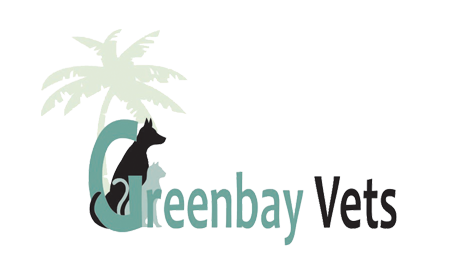Cockatiel
General information
 The cockatiel (Nymphicus hollandicus) is one of the best known and most widely kept member of the parrot family other than the budgie. These Australian natives with their elegant long tail and crested head, possess the exotic look of a cockatoo (and are distantly related). They are a graceful, gentle and generally quiet bird well suited for a household with children. Larger than budgies and smaller then parrots, these entertaining birds are easy to maintain and provide endless hours of entertainment and companionship. A single bird may have better social interactions with family members than multiple birds in the same house. These birds are wonderful whistlers and do possess a limited ability to talk, although their voice is whistle-like in sound. Males tend to be better talkers than the females. They are beautiful flyers and enjoy lots of activity and play. These
birds need to be entertained. Cockatiels love to chew, therefore providing bird-safe toys will easily distract them from the unwanted destructive chewing they may otherwise do around the house. Non-toxic, untreated branches or pieces of wood are readily available and fun for the birds to chew on.
The cockatiel (Nymphicus hollandicus) is one of the best known and most widely kept member of the parrot family other than the budgie. These Australian natives with their elegant long tail and crested head, possess the exotic look of a cockatoo (and are distantly related). They are a graceful, gentle and generally quiet bird well suited for a household with children. Larger than budgies and smaller then parrots, these entertaining birds are easy to maintain and provide endless hours of entertainment and companionship. A single bird may have better social interactions with family members than multiple birds in the same house. These birds are wonderful whistlers and do possess a limited ability to talk, although their voice is whistle-like in sound. Males tend to be better talkers than the females. They are beautiful flyers and enjoy lots of activity and play. These
birds need to be entertained. Cockatiels love to chew, therefore providing bird-safe toys will easily distract them from the unwanted destructive chewing they may otherwise do around the house. Non-toxic, untreated branches or pieces of wood are readily available and fun for the birds to chew on.
Purchasing a cockatiel
Cockatiels may be purchased from a pet shop or, better, a reputable breeder. When selecting a cockatiel, try to choose a young bird as it will be easier to tame and train. Older colony or parent raised birds may prove difficult to tame. Hand raised babies often make better pets since they have been completely socialised with humans. Young birds are easy to tame and adapt readily to new environments and situations. Your new bird should be exposed early to different events (young and old people, males and females, other pets, car trips, visits to the vet, etc.) to help promote a calm, well adjusted pet. The lively, alert bird that is not easily frightened is more likely a healthy bird. After purchasing your new bird, have it examined by your vet.
Veterinary care
Cockatiels require regular, routine veterinary health check-ups. Your vet can perform a physical examination, grooming (beak, nail or feather trim) and laboratory tests as needed. During these semi-annual check-ups, health, nutritional and maintenance issues can be identified and addressed. Veterinary check-ups help prevent disease and will aid in the maintenance of a long lasting, healthy relationship between you and your bird.
Colour
Mature
- naturally occurring grey bird with yellow face and orange cheek patch with white on front part of wing
- colour mutations include lutino (white - lemon yellow), pied, pearl, cinnamons and many combinations
Immature
- same as female
Sexing
Mature
- males have solid colouring on the underside of the tail feathers and long wing feathers, they have a brighter yellow face and brighter orange cheek patch
- females have horizontal fine yellow barring on the underside of the tail feathers, yellow spots on the underside of the long wing feathers, they have a pale yellow face and duller orange cheek patch
- note that these gender differences apply only to the natural colour birds and some of the other colour variants
Immature
- same as the adult female
- mature colouring occurs after first moult around 9 - 12 months
Weight
Average 80 - 95 grams (2.8-3.5 ounces).
Size
Average 32 cm (12.5 ins) in length.
Life span
10-14 years (maximum 32 years).
Diet
Consult your vet or see the diet sheet in this series.
Breeding
- sexual maturity 8-12 months
- prolific breeders year round but require large cages, lots of exercise, a large nest box and privacy. Even lone females may lay eggs continuously. This can be a very difficult problem to treat and a veterinarian should be consulted as soon as they start laying.
Brood size
4-8 cream coloured eggs hatch in 18-20 days, young leave the nest in 5 weeks.
Cage
Minimum 60 cm x 60 cm x 90 cm (2 ft x 2 ft x 3 ft).
© Copyright 2025 LifeLearn Inc. Used and/or modified with permission under license. This content written by LifeLearn Animal Health (LifeLearn Inc.) is licensed to this practice for the personal use of our clients. Any copying, printing or further distribution is prohibited without the express written consent of LifeLearn. This content does not contain all available information for any referenced medications and has not been reviewed by the FDA Center for Veterinary Medicine, or Health Canada Veterinary Drugs Directorate. This content may help answer commonly asked questions, but is not a substitute for medical advice, or a proper consultation and/or clinical examination of your pet by a veterinarian. Please contact your veterinarian if you have any questions or concerns about your pet’s health. Last updated on May 28, 2009.
